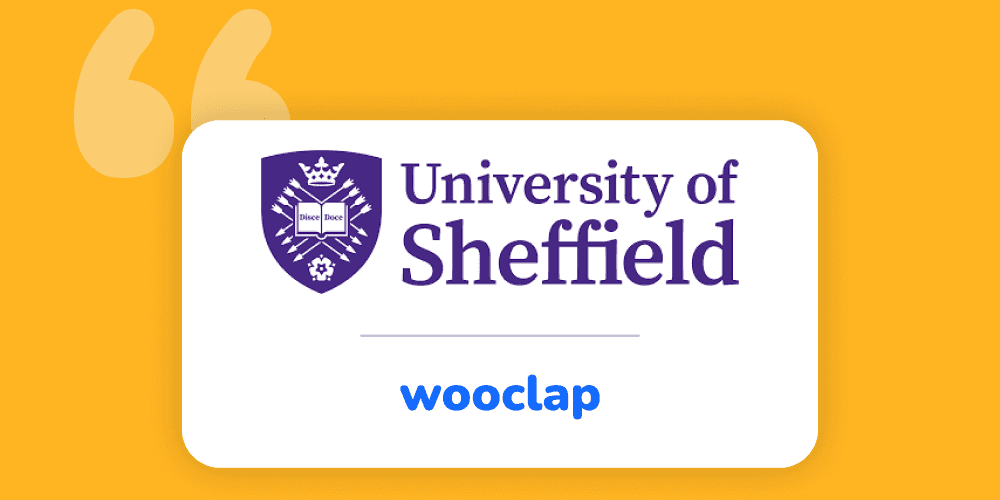How blended learning helped overcome the pandemic
27.05.2020 • 4 minutes

With the end of the school year approaching, and much uncertainty surrounding the next one, universities have to rethink the 2020-2021 academic year. Rob Howe, Head of Learning Technology at the University of Northampton, explains how blended learning has helped them overcome the COVID-19 crisis.
How did you manage the transition from a classroom model to a remote teaching one for teachers and students? What did you have to put in place? What were the major challenges?
Rob Howe (R.H.): The University of Northampton already had a model based around Active Blended Learning which had led the move away from large face-to-face lecture delivery, and towards smaller group engagement. Howe describes active blended learning as “a pedagogical approach that combines sense-making activities with focused student interactions (with content, peers and tutors) in appropriate learning settings – in and outside the classroom. ABL focuses on engaging students in knowledge construction, reflection and critique, on the development of learner autonomy and of course, on the achievement of learning outcomes.”
This pedagogy was behind the move to a purpose-built £330m Campus in the centre of the town, which has involved a significant number of partners and attracted international attention. The new campus ethos predicated that the space in the new campus must be:
- Adaptable – flexible
- IT rich
- Integrated
- Democratic
All of the work involved in the transition – including issuing mobile staff with laptops along with an increasing focus on digital capability support - meant that the move to Emergency Remote Teaching (ERT) was made with fewer issues than those faced at comparable institutions. That is not to say that the move was at all easy (there were significant challenges) but we had some sensible foundations in place. These included:
- A multi-award winning learning technology team who were already used to remote support;
- A wide range of institutional technology tools which were already licensed for use;
- A highly supportive Library and Learning Services Team who were already familiar with remote support for staff and students;
- A full range of highly responsive student support services teams.
As the University moved from critical response to business recovery, there were highly regular focused group meetings with key staff to coordinate the responses at each stage. Communication to staff and students rapidly improved during this period. Issues moved from focusing on macro items down to more personalised support from the initiation of the physical campus shutdown.
Several documents were rapidly created and approved, including:
- Hints and tips on teaching remotely;
- Clarification on institutionally approved technologies and the range of support for each of these;
- The importance of maintaining quality standards with remote delivery;
- Display Screen Equipment – including a Home Support Hub.
Naturally, there were challenges for both staff and students – particularly around the range of digital skills, personal issues / disabilities and technical issues with personal devices and with home networks / wifi. Emotional support was picked up as a key area that needed focus and additional information has also been sent regarding this.
There was a rapid increase in online conferencing for staff and students which has enabled new affordances.
What does your assessment planning look like? How will you evaluate the students?
(R.H.): In the early stages, there was an immediate extension to existing activities to allow for time to consider options. Following this there was then a move to convert existing exams into time constrained assignments where possible. There was a focus on assessments which could be done offline and then submitted electronically to minimise technical issues.
What will you retain from this experience for the next academic year?
(R.H.): There are a few experiences that may be retained:
- A better balance of technology and face to face delivery
- More flexible delivery
- Enhanced / creative tracking of student progress
- More flexible delivery for staff and students
- More creative use of physical space
- Greater use of online personal development tools
What would be the focus of your department for the next academic year?
(R.H.):
- Increasing staff and student digital literacy
- Refine the key tools which were useful and drop ones which are not needed
- Continue to enhance the VLE as a key delivery tool
- Integrate systems to improve user experience
- Keep up with regular communication
- Refine the definition of ABL to cater for multiple modes of delivery
- Prepare for hybrid induction and delivery
- Complete existing planned projects but refine for new ways of working where needed.
You can follow Rob Howe, Head of Learning Technology at the University of Northampton, on Linkedin, and the University of Northampton on Twitter.
Discover our resources on distance learning with Wooclap
Writer
Albane Juarez
Marketing & Communication Manager @Wooclap
Rather than fighting smartphones, Wooclap turns them into an exceptional learning tool
A monthly summary of our product updates and our latest published content, directly in your inbox.

